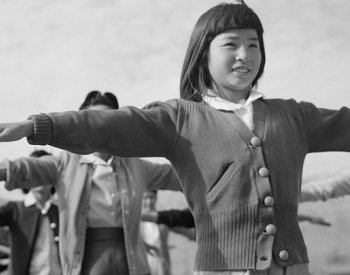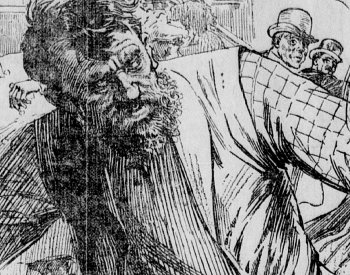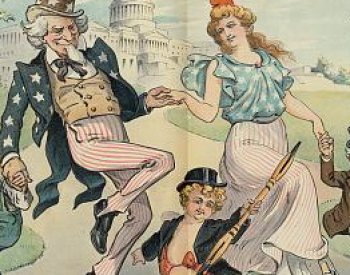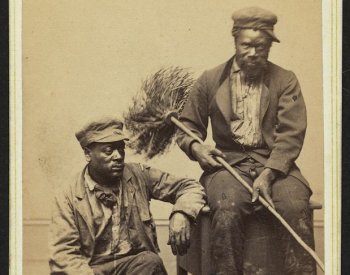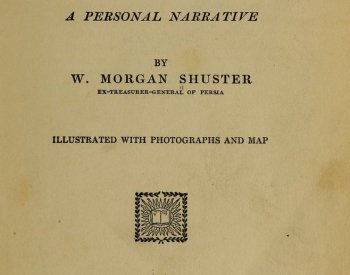To answer this question correctly, students must first determine that the account of a single soldier does not necessarily represent the morale of the entire Union Army. They then must determine whether each of the three documents could be used to corroborate the soldier’s account.
Level: Proficient
Question 1
Student explains that one letter is not representative of the morale of the entire Union Army or that the author’s perspective is limited.
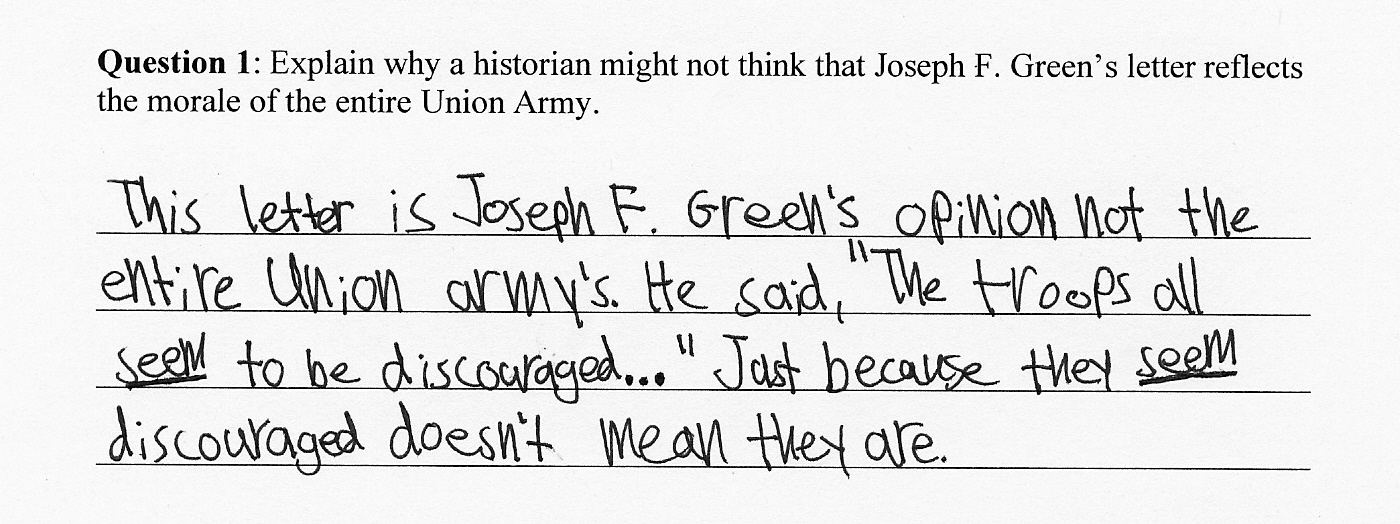
The student correctly identifies the author of the source and explains the limitations of a single soldier's perspective.
Student rightly identifies the qualifying language and its limitations.
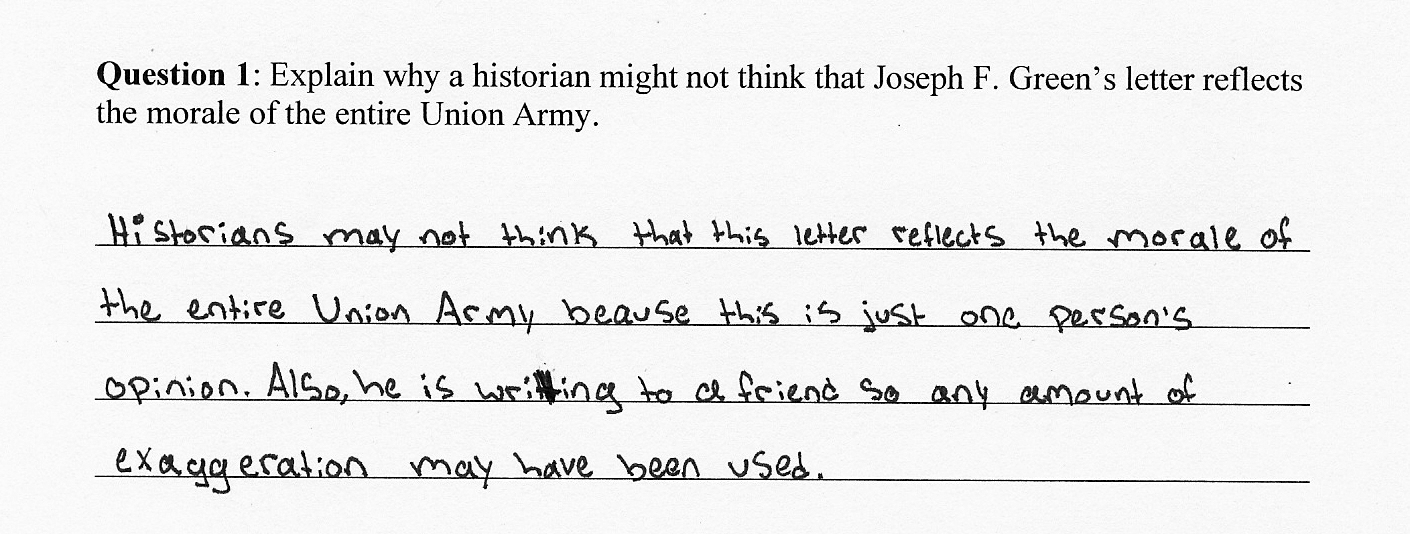
The student has made a small spelling error, but it does it not take away from the cogency of the response.
This student points out that the purpose of the document -- corresponding with a friend -- may influence its content.
Question 2
a. Student rejects the source and explains that it contradicts Green’s position, that it does not provide direct evidence of morale, or that a public speech by a politician does not necessarily provide accurate information about morale.
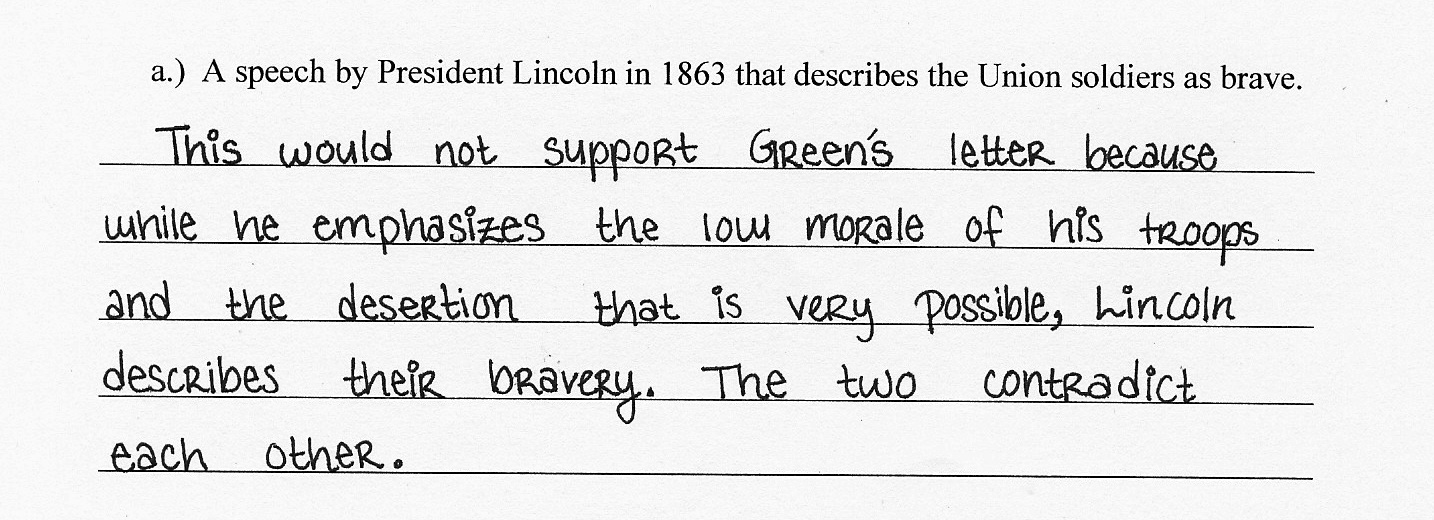
The student correctly focuses on the misalignment between Lincoln's speech and Green's letter.
b. Student explains that this would be a useful source for corroborating Green’s position because it is relevant in time and detail.
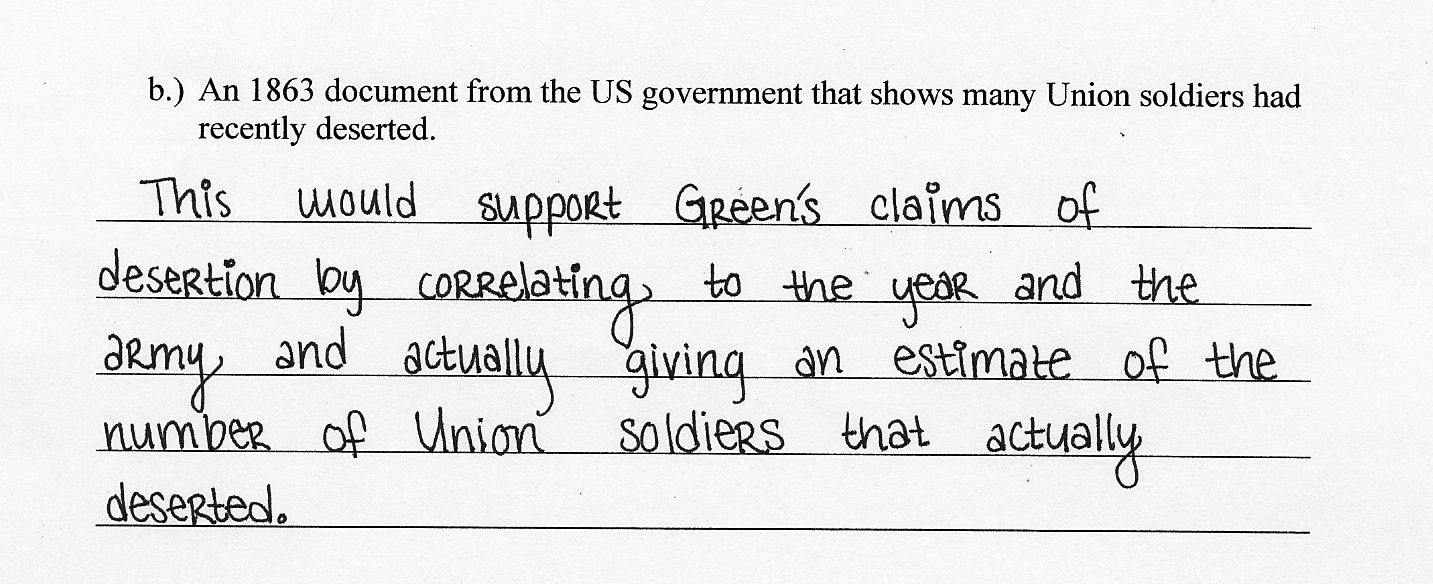
This student recognizes that Green's argument is strengthened by a document that corresponds in time and provides a broader perspective.
c. Student rejects the source because it describes the experience of Confederate soldiers, not other Union soldiers. Additionally, students might also note that the letter was written two years before Green's account.
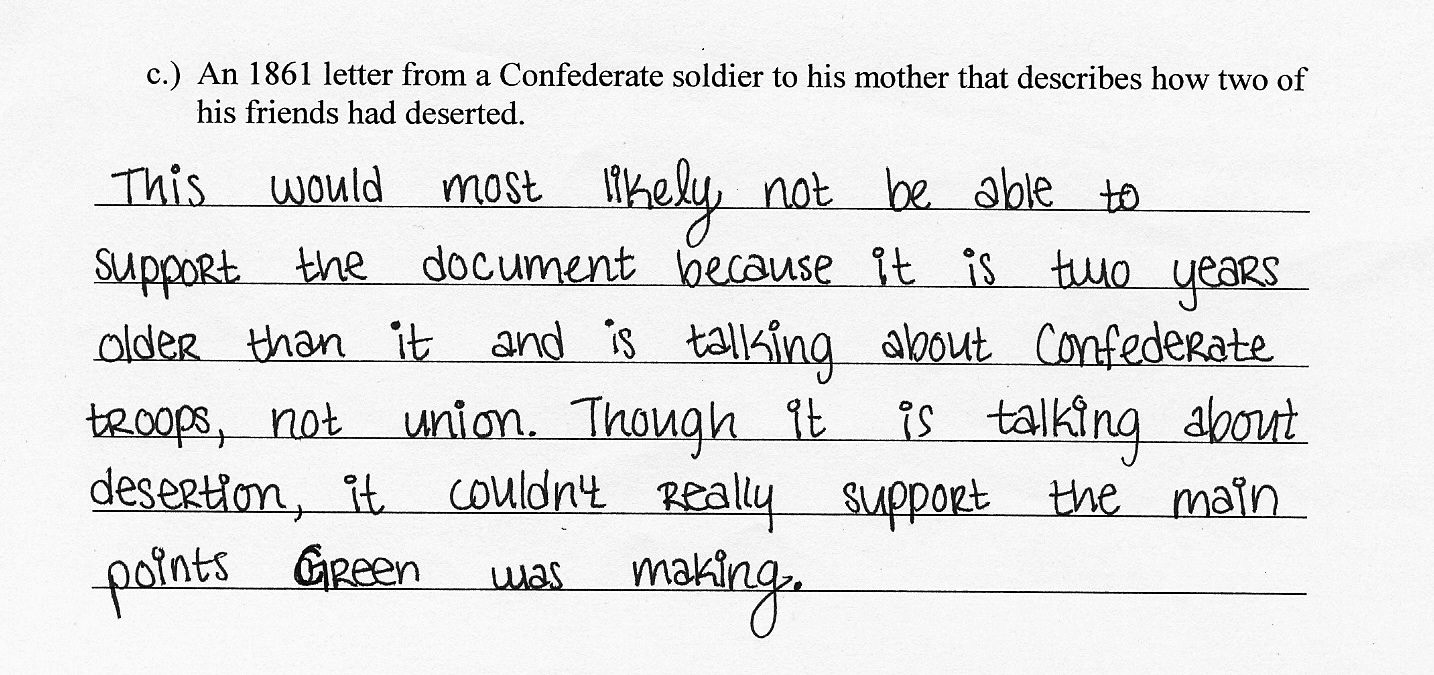
The student identifies that the difference in the date of this second letter makes it less useful because it is from a different period of the war.
Although this letter might demonstrate generally low morale among soldiers on both sides, it does not directly support Green's claims about the Union Army.
Level: Emergent
Question 1
Student shows some understanding of the limits of using a single letter to gauge the morale of the entire Union Army. However, the student does not provide a full explanation.

The student is correct in noting that this is just one person's opinion but does not explain why this makes the document less representative of the Union Army as a whole.
The student also does not provide a clear rationale for why a higher ranking officer would have a better sense of the morale of the Union Army.

This student seems to understand the limitations of Green's letter but does not clearly articulate why a single account may not represent the sentiments of a much larger group.
Question 2
a. Student rejects the speech but provides only a partial explanation of the problems of using it to support Green's claims.
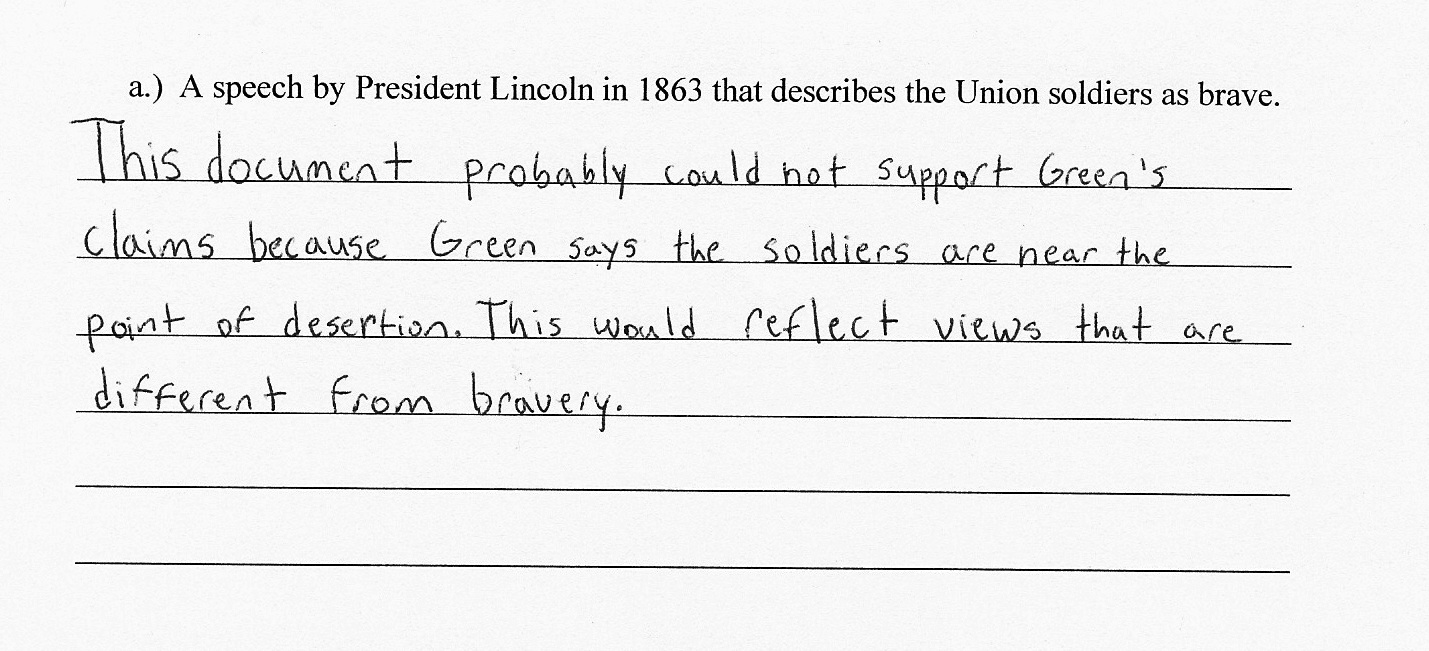
The student is correct in noting that the speech would not support Green's claims, but the explanation is vague.
b. Student correctly notes that it would support Green's claims but provides only a partial explanation of why it does.
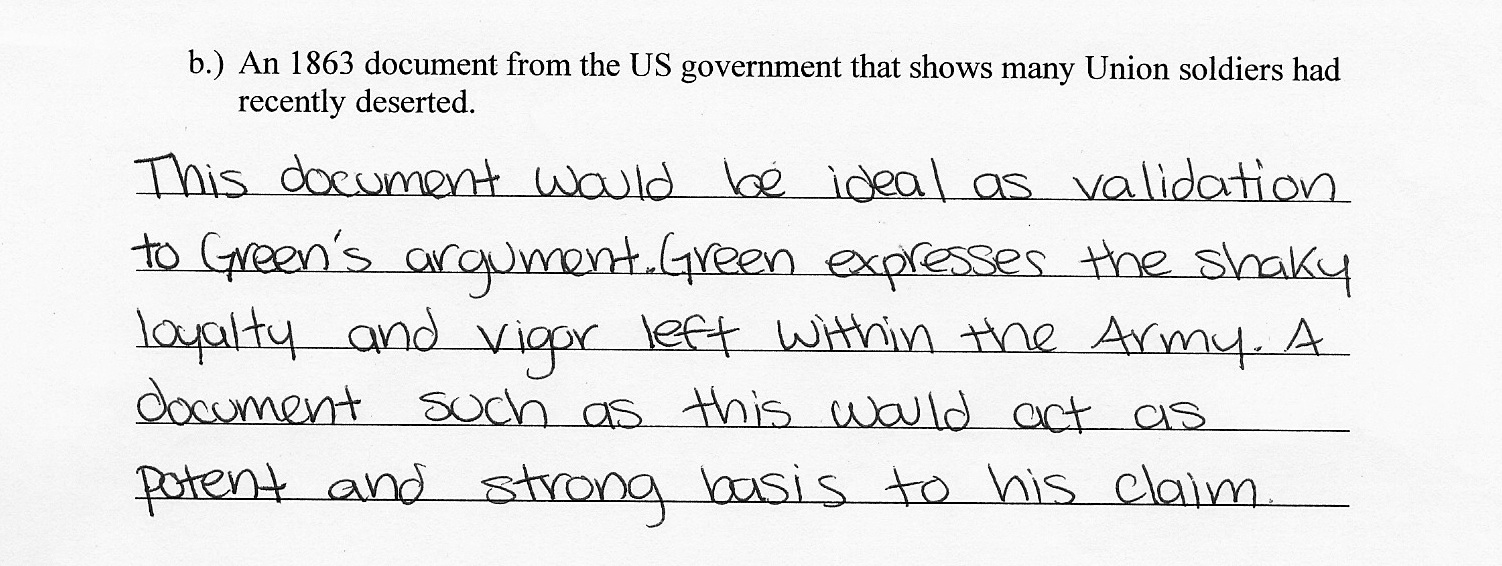
The student has not explained what, exactly, it is about this document that would give greater credence to Green's claims.
This response would have been stronger had the student noted that this report is from the same year as Green's letter or that it provided a broader view of morale in the Union Army.
c. Student rejects the letter but provides only a partial explanation of why.

The student identifies that a letter from a Confederate soldier will be problematic but does not explain why.
Level: Basic
Question 1
Student does not identify the limitations of using a single letter to determine the morale of the entire Union Army.

This is irrelevant to the question about Green's letter.
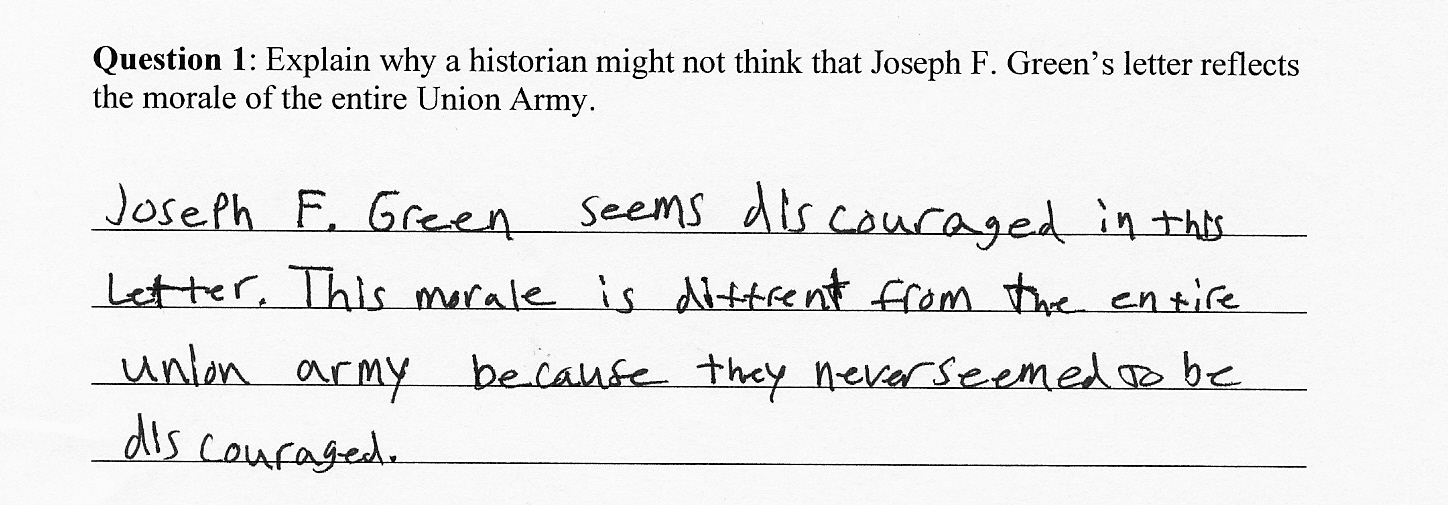
Instead of considering the nature of the source, the student makes an unfounded assertion about the Union Army.
Question 2
a. Student does not reject the source or provides an unclear explanation.

Instead of evaluating whether the speech would support Green's claims, the student indicates that the speech could help to prove that the Union soldiers were brave.
b. Student rejects the source or provides an unclear explanation.
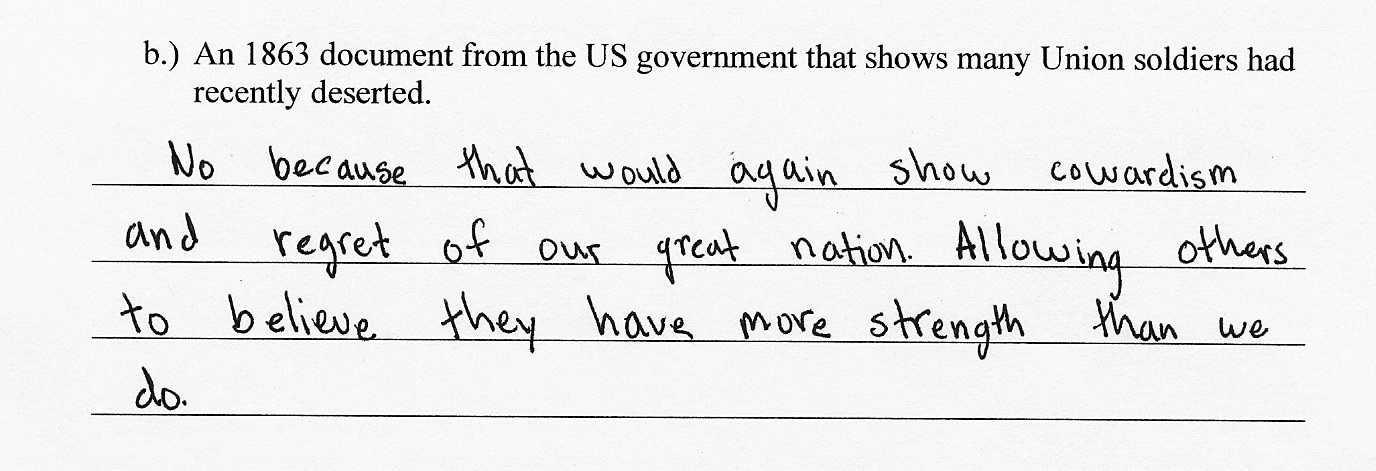
This response does not address the prompt.
c. Student does not reject the source or provides an unclear explanation.

The student does not notice that the letter is written by a Confederate soldier and does not provide a clear explanation.

